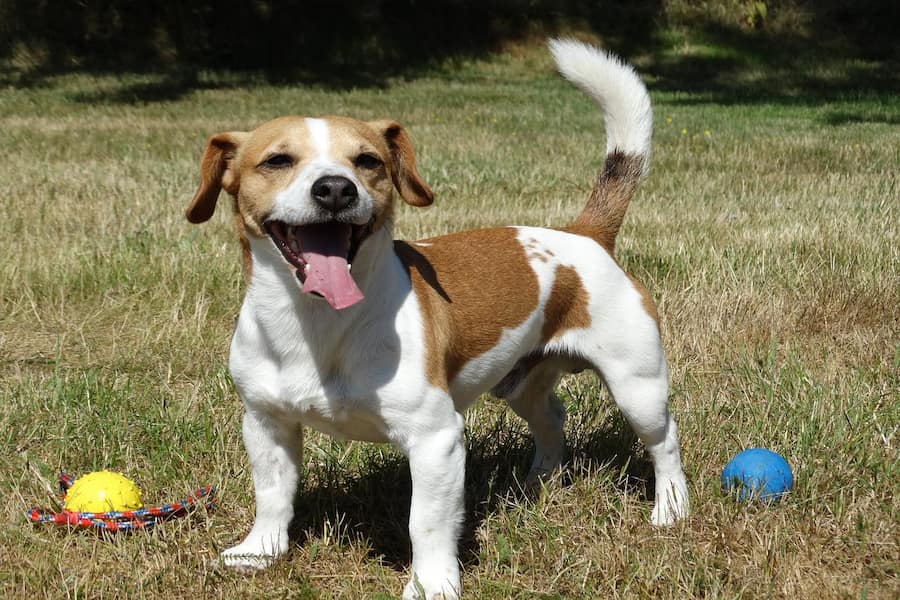Why Does My Dog Walk Backwards?
Have you ever noticed your dog taking a few steps backward instead of moving forward like usual? It might seem peculiar at first, but there can be several reasons behind this unusual behavior. In this article, we will explore the possible explanations for why dogs walk backward and delve into the fascinating world of canine behavior.
Dogs are known for their unique and sometimes quirky behaviors, and walking backward is no exception. While it may seem like a simple action, there can be underlying factors that contribute to this peculiar behavior. It is essential for dog owners and enthusiasts to understand the reasons behind their furry companions’ actions to ensure their well-being and happiness.
One possible reason for a dog walking backward is a physical discomfort or pain. Dogs, like humans, may exhibit unusual behavior when they are experiencing discomfort or injury. It could be an indication of joint problems, muscle strain, or even a neurological issue. If you notice your dog frequently walking backward or displaying any signs of discomfort, it is crucial to consult with a veterinarian to rule out any underlying health issues.

Another explanation for a dog walking backward could be related to their instincts and natural behaviors. Dogs have a strong instinct to mark their territory and establish boundaries. Walking backward can be a way for them to leave their scent in a specific area or mark their presence. Additionally, some dogs may exhibit this behavior as a way to assert dominance or communicate with other dogs.
Furthermore, dogs may walk backward as a result of training or learned behavior. If a dog has been trained to perform certain actions or commands, such as backing up, they may exhibit this behavior in various situations. It could be a response to a specific cue or a learned behavior that they associate with a particular context or reward.
In conclusion, there can be multiple reasons why your dog walks backward. It could be due to physical discomfort, instinctual behaviors, or learned responses. Understanding the underlying causes can help you better interpret your dog’s actions and ensure their well-being. If you are concerned about your dog’s backward walking behavior or notice any other unusual behaviors, it is always advisable to seek professional guidance from a veterinarian or a certified dog behaviorist.
Now that we have explored the possible reasons behind a dog walking backward, let’s move on to the main text where we will delve deeper into each of these explanations.
Exploring the Reasons Behind a Dog Walking Backwards
Physical Discomfort or Pain
One possible explanation for a dog walking backward is physical discomfort or pain. Dogs, like humans, can experience various health issues that may cause them to exhibit unusual behaviors. Joint problems, such as arthritis or hip dysplasia, can make it uncomfortable for a dog to move forward, leading them to walk backward instead. Similarly, muscle strains or injuries can also result in this behavior.
If you notice your dog walking backward frequently or displaying signs of discomfort, such as limping or difficulty standing up, it is essential to consult with a veterinarian. They can assess your dog’s overall health and conduct any necessary tests to identify and address the underlying cause of the discomfort.
Instinctual Behaviors
Another possible reason for a dog walking backward lies in their instinctual behaviors. Dogs have a strong instinct to mark their territory and establish boundaries. Walking backward can be a way for them to leave their scent in a specific area or mark their presence. This behavior can also serve as a form of communication with other dogs, indicating their presence and asserting dominance.
Additionally, some dogs may display this behavior when they encounter unfamiliar or intimidating situations. Walking backward allows them to maintain a cautious distance while still keeping an eye on potential threats. It serves as a defensive mechanism that helps them feel more secure in unfamiliar surroundings.
Learned Behavior and Training
Dogs are highly trainable animals, and their ability to learn and adapt to commands plays a significant role in their behavior. If a dog has been trained to perform certain actions, such as backing up on command, they may exhibit this behavior in various situations.

For example, if a dog has been trained to back up as part of an obedience routine or for specific tasks, they may generalize this behavior and use it in other contexts. It can become a learned response that they associate with certain cues or rewards. In such cases, a dog walking backward may simply be following a learned behavior pattern rather than displaying any underlying discomfort or instinctual behavior.
Conclusions
In conclusion, understanding the peculiar behavior of your dog, such as “Why Does My Dog Walk Backwards,” can be both fascinating and important for their overall well-being. For more insights and explanations on this behavior, you can explore our in-depth article at geepets.com. Additionally, for further information and professional advice on canine behavior, visiting reputable websites like the American Kennel Club (AKC) at akc.org can be incredibly helpful. These resources offer a wealth of knowledge on dog behaviors, helping pet owners better understand and care for their furry friends.
Practical Recommendations for Dealing with a Dog Walking Backwards
1. Consult with a Veterinarian
If you notice your dog walking backward frequently or displaying signs of discomfort, prompting the question, “Why does my dog walk backwards?” it is crucial to consult with a veterinarian. They can conduct a thorough examination to delve into the reasons behind the behavior, “Why does my dog walk backwards?”
The vet may recommend further tests, such as X-rays or blood work, to get a comprehensive understanding of your dog’s condition and address the underlying question, “Why does my dog walk backwards?” This approach ensures that any health issues causing your dog to exhibit the behavior of walking backwards are identified and treated appropriately. Understanding “Why does my dog walk backwards?” through professional evaluation is essential in ensuring your pet’s health and well-being.
2. Provide Physical Comfort
If you’re pondering, “Why does my dog walk backwards?” and you’ve identified that your dog’s backward walking is a learned behavior, positive reinforcement training can be an effective solution. To address the question of “Why does my dog walk backwards?” it’s crucial to use rewards, such as treats or praise, to reinforce desired behaviors and discourage the backward walking. When you’re trying to understand “Why does my dog walk backwards?” and aim to alter this behavior, working with a professional dog trainer or behaviorist becomes invaluable.
They can offer guidance in implementing appropriate training techniques and strategies specifically tailored to answer your concern of “Why does my dog walk backwards?” Through this professional assistance, you can ensure that your approach to the issue is effective, encouraging your dog to adopt more conventional walking patterns while also providing insights into the question of “Why does my dog walk backwards?” This targeted training will not only help resolve the peculiar behavior but also enhance your understanding and connection with your dog, addressing the underlying reasons behind “Why does my dog walk backwards?”
3. Engage in Positive Reinforcement Training
If your dog’s backward walking is a learned behavior, positive reinforcement training can be an effective approach. Use rewards, such as treats or praise, to reinforce desired behaviors and discourage the backward walking. Work with a professional dog trainer or behaviorist who can guide you in implementing appropriate training techniques and strategies.
4. Create a Safe and Enriching Environment
Ensuring that your dog’s environment is safe and enriched is crucial to minimize stress and anxiety, which can often lead to the question, “Why does my dog walk backwards?” Providing your dog with plenty of mental and physical stimulation through interactive toys, puzzle games, and regular exercise can help address the underlying reasons behind the behavior. A well-exercised and mentally stimulated dog is less likely to exhibit unwanted behaviors, including the peculiar habit of walking backwards. If you’re pondering, “Why does my dog walk backwards,” it’s important to consider whether their environment offers enough stimulation.
Incorporating more interactive toys and engaging in regular exercise can significantly reduce instances where you find yourself asking, “Why does my dog walk backwards?” By addressing their need for mental and physical engagement, you’re less likely to witness behaviors that might lead you to ask, “Why does my dog walk backwards?” Remember, a dog that is well-cared for in terms of both physical and mental stimulation is less likely to develop stress or anxiety-related behaviors, thus reducing the likelihood of you questioning, “Why does my dog walk backwards?”
5. Consider Professional Behavior Consultation
If you’re wondering, “Why does my dog walk backwards?” and this behavior persists or is accompanied by other concerning behaviors, consider seeking the assistance of a certified dog behaviorist. They can assess your dog’s behavior holistically, identify any underlying triggers related to the question of “Why does my dog walk backwards?”, and develop a customized behavior modification plan.

Professional guidance can greatly enhance your understanding of your dog’s behavior, specifically addressing the concern of “Why does my dog walk backwards?” and help you address the issue effectively. Their expertise can provide insights into the unique question of “Why does my dog walk backwards?” ensuring that any intervention is tailored to your dog’s specific needs and behaviors.
6. Practice Patience and Understanding
Remember, behavioral changes, such as wondering “Why does my dog walk backwards,” take time and consistency. Be patient with your dog and provide them with understanding and support throughout the process. When puzzling over “Why does my dog walk backwards,” avoid punishment-based methods, as they can exacerbate anxiety and fear, possibly contributing to the reason behind “Why does my dog walk backwards.” Instead, focus on positive reinforcement, consistency, and clear communication to encourage desired behaviors.
Our featured products:
Understanding the underlying cause of “Why does my dog walk backwards” and addressing it with patience and positive strategies can lead to significant improvements. This approach not only helps in resolving the specific concern of “Why does my dog walk backwards” but also strengthens the bond between you and your pet, fostering a more trusting and cooperative relationship.
7. Maintain Regular Veterinary Check-ups
Regular veterinary check-ups are essential to monitor your dog’s overall health and well-being. Schedule routine visits to ensure any underlying health conditions are addressed promptly. Your veterinarian can provide guidance on maintaining your dog’s physical health, which can positively impact their behavior.
By following these practical recommendations and seeking professional guidance when needed, you can better understand and manage your dog’s backward walking behavior. Remember, every dog is unique, and what works for one may not work for another. Stay attuned to your dog’s individual needs, and with patience and consistency, you can help them lead a happy and fulfilling life.















